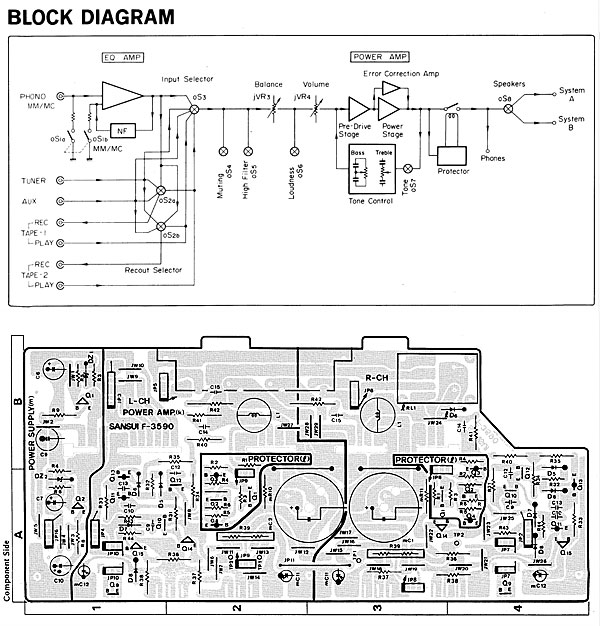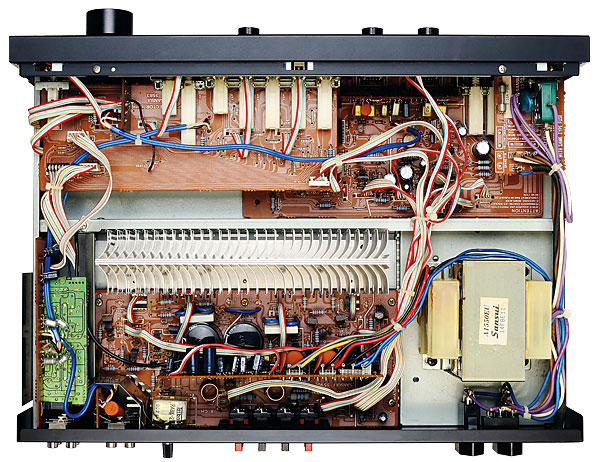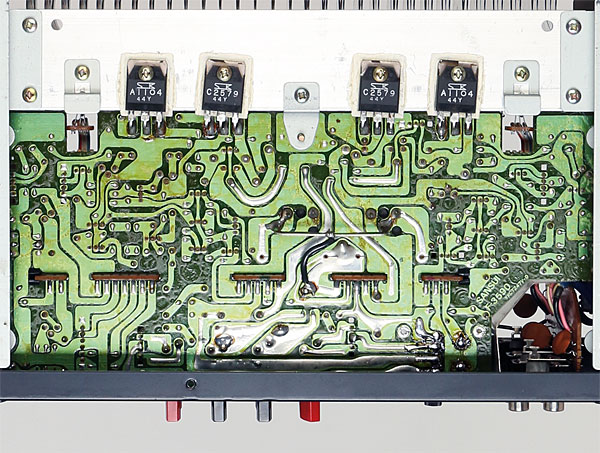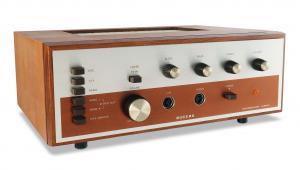Sansui AU-D33 Integrated Amplifier Page 2
A little bit of drama is added to the switching-on procedure as the power indicator (marked 'protector') flashes until the protection circuit is ready to close the relay which connects the speakers to the amplifier. Something else I appreciated was the sensibly limited range of the tone controls. They are ideal for making minor corrections to poorly produced material but won't generate a thumping bassline or searing treble where none is supposed to be.
![]() Tim Listens
Tim Listens
Initial impressions of the AU-D33 revealed no obvious flaws. If this appears to be damning the amplifier with faint praise, previous experience with designs that place networks of passive components between output transistors and the outside world caused me to be wary, as these can sometimes sound overly laid-back. Yet the dynamic, lively 'D33 seemed free of this.

That said, the presentation was a little on the tame side when compared with that of the raucous AU-317II. Still, the '317 may be too up-front for some tastes, and the AU-D33 displays some welcome smoothness in its character. In motorcycle terms it is still more of a Kawasaki than a Honda (ie, visceral rather than considered) but it still has a sound I believe the majority of listeners could embrace and enjoy.
Whether or not this is down to the Super Feedforward System it is difficult to say, but the trade-off seemed to be a marginal reduction in bass 'punch' when the two models were compared directly, even when the AU-317II's extra 10W of claimed output was taken into consideration. Noise performance was excellent, there being none audible from the listening position at any setting of the volume control when using the line-level inputs.

New Order's Technique [FACD 275-2] revealed that the AU-D33's calling card is its busy, lively treble. Although well rounded by the standards of previous Sausui designs, it still dominates the listening experience. This, and plenty of power, make playing tracks such as 'Fine Time' and 'Vanishing Point' an invigorating experience, provided your neighbours are forgiving and your speakers are up to it.

This is, in many ways, the archetypal 'bedsit PA' amplifier; not too expensive but lots of go. The bass is powerful but just sometimes becomes poorly focused, a few combinations of sounds seeing it trip over itself and descend into brief passages of muddle. With sympathetic material, however, the low notes have a tight, stop-start quality about them which makes the AU-D33 sound clean and modern.
Love Affair
Gentler styles of music showed the AU-D33 to be able to separate out the layers in complex recordings. Sade's 'Frankie's First Affair', from her debut album Diamond Life [Epic 26044] was neatly dissected, with the percussion sounding especially vivid and the sax delivered with a delicious rasp. If there was a niggle it was that I've heard other amps do better with vocal textures. Adu's voice was full and rendered with a convincing centre presence, but the presentation was a little monochromatic and recessed compared with how it can sound via amps with best-in-class performance.
Nonetheless, the AU-D33 is a decent-sounding amplifier which does everything one could want of it. What's more, it looks good and is solidly made. For those in the market for an early '80s middleweight, it deserves to be on the shortlist.
Buying Secondhand
Despite the doubling up of some of the circuit functions that the amp's Super Feedforward System makes necessary, the AU-D33 has certainly proved reliable in service. Fault patterns are similar to those of any similar product, with the loudspeaker muting relay perhaps being the component to cause the most trouble.
Setting up the DC offset of the output stage can also be tricky since the present controls have an unusually abrupt action and this, combined with the hair-trigger sensitivity of the electronic protection system, is the usual cause of the sound dropping out suddenly at odd occasions. One can afford to be selective when buying as the AU-D33 was a highly popular model that lasted well and there are still plenty of them to be found.

Hi-Fi News Verdict
The Super Feedforward System used here means the AU-D33 offers something genuinely different to the typical Japanese amplifier of the period. Although toned down, the Sansui character is still present in spades, meaning the amp boasts a muscular and fast-paced sound. Easy to build a system around, attractive and well made, the AU-D33 should appeal to experienced and new listeners to vintage hi-fi alike.
























































